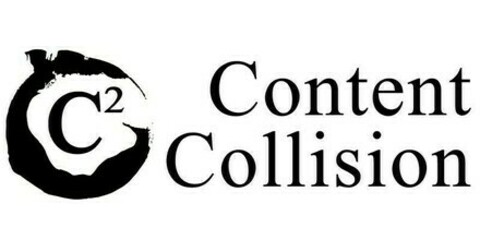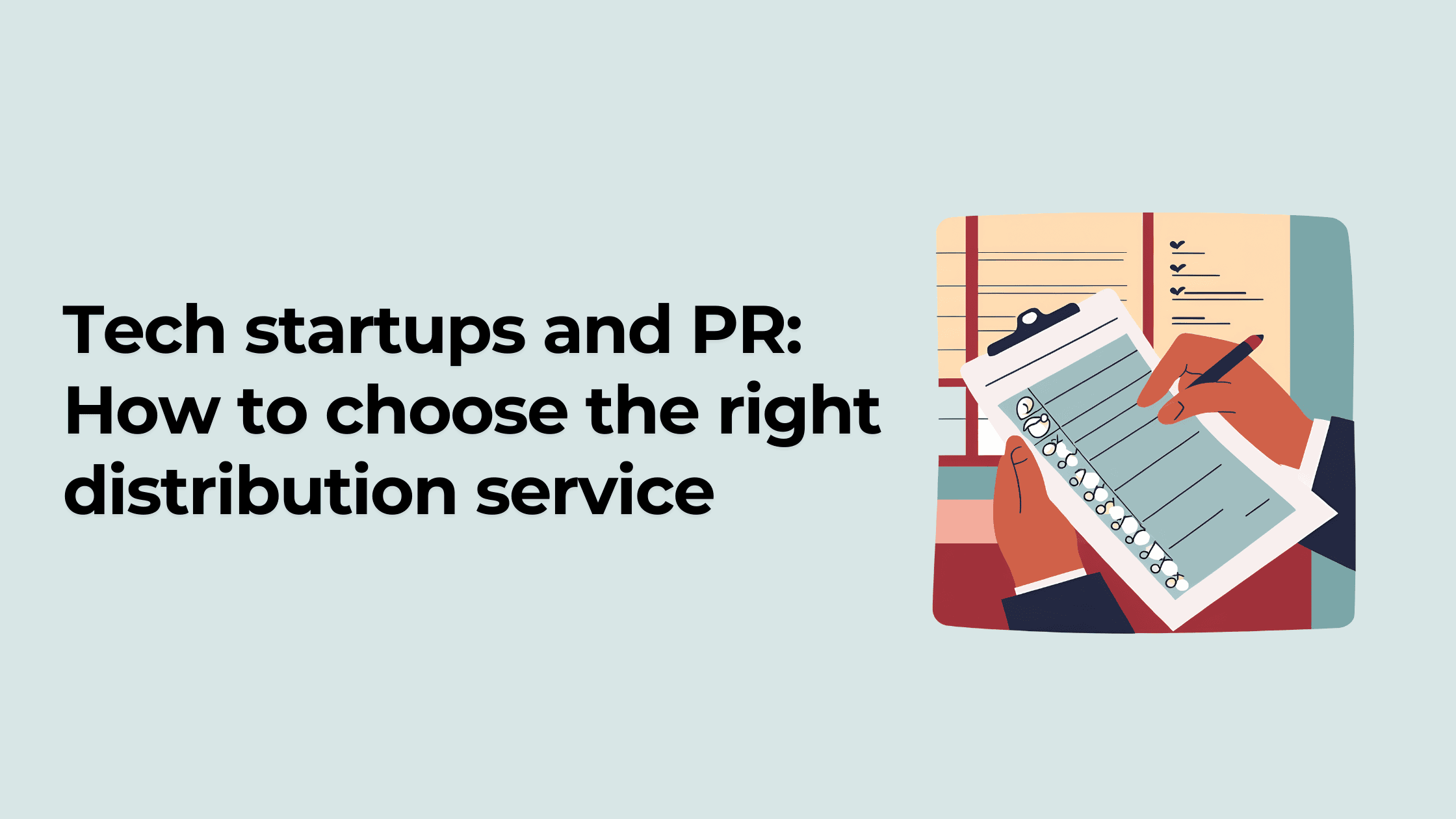Tech startups: how to evaluate PR distribution services — a complete checklist
Evaluate PR distribution services with this checklist. Measure media coverage, SEO, and leads—more importantly, was it worth the cost?

Congratulations! You've made it—your company is in the news!
You've noticed a spike in website traffic after the publication, and even better, the articles are all speaking positively about your brand.
Sounds great, right? Absolutely. But there’s more to evaluating the success of a PR campaign than just getting your name out there. After about a week, whether you have a PR distribution service from a PR agency or through a newswire, you'll typically receive a report on the campaign’s performance.
In this article, we’ll walk you through an evaluation checklist to help you review that report, assess the effectiveness and impact of your PR distribution, identify gaps or areas for improvement, and figure out what’s working and what’s not. Use this as a foundation for making informed decisions about your future PR strategy.
Here are the key points to evaluate PR distribution performance:
1. Evaluating media coverage vs. your target outlets
One key aspect to evaluate in your PR distribution report is how many media outlets actually covered your press release compared to the initial target list. The quantity matters, but so does the quality of the outlets. Did the service manage to get your news into publications that are well-known and credible within your industry?
Next, check the geographical coverage. Did your press release get picked up in the regions you were aiming for? Whether your goal was local, national, or global exposure, it’s important to see if the distribution service reached the intended areas.
Lastly, make sure the outlets align with your target audience. It’s not just about reaching many platforms, but about whether those platforms cater to your audience. Were the media outlets relevant to where your potential customers or key stakeholders consume news?
2. Total pickup rate
Another important metric to evaluate is the total pickup rate—how many media outlets actually published your press release. Beyond direct placements, news syndication plays a key role. Syndication occurs when your release gets shared across multiple platforms, including news aggregators like Google News or Yahoo News, which attract high traffic. These aggregators serve as bonuses, offering additional exposure beyond your target media list and helping your message reach a wider audience.
In addition to the number of placements, it's important to consider the publication tier. Were your press releases featured in high-authority publications or smaller niche blogs? This can affect the overall visibility and impact of your PR campaign. Lastly, evaluate whether the release was syndicated across various platforms, further amplifying your reach and maximizing the value of your PR efforts.
3. If you're using newswire, you can also check media pickups and engagement
Beyond just placement, pay attention to clicks and reads—how many people clicked through to read the full release? This gives you an idea of how engaging the headline and content were.
Next, consider the interaction with your content. Metrics like time spent on the page, scroll depth, or engagement on social media platforms can tell you how well the release resonated with your audience. The more interaction, the better the content likely connected with readers.
Finally, evaluate the shares and social signals. Did your release generate any likes, shares, or comments on social platforms like LinkedIn, X, or Facebook? Social engagement boosts the reach of your PR and indicates that your message sparked interest or conversation beyond the initial media coverage.
4. SEO impact: did you see any traffic spike?
Once your press release is distributed and covered by media outlets, it’s time to check the SEO impact. Ideally, you should pause any other marketing activities during this period to make it easier to analyze the results. Pay close attention to any traffic spike, as a week of monitoring should provide enough insight into how your press release is influencing your site’s visibility.
Start by evaluating backlinks generated. Beyond media coverage and aggregator syndication, did your press release result in quality backlinks to your website or relevant landing pages? Be cautious of negative backlinks—those coming from low-authority or spammy sites—as they can harm your SEO efforts instead of boosting them. Keeping track of where your backlinks are coming from is crucial to maintaining a strong SEO profile.
Additionally, check for improvements in keywords and rankings. Did the press release help boost your site’s position for important search terms? Lastly, make sure the coverage appeared on high domain authority sites. The stronger the authority of the sites, the bigger the potential SEO benefit for your website.
5. Lead generation: did your press release bring in leads?
While you're checking the SEO impact, it's also a good time to analyze the lead generation results during this period. Beyond visibility, a successful PR campaign should drive relevant traffic and generate leads for your business.
Start by assessing the referral traffic. How much traffic did the press release send to your website? The number of visitors coming from media placements can help you gauge the effectiveness of the distribution. Next, evaluate conversions—did the press release result in any measurable outcomes, such as sign-ups, inquiries, or sales?
Finally, consider the quality of the leads. Were the leads generated relevant to your business? High-quality leads that align with your target market are more valuable than a large volume of unqualified traffic. Evaluating lead quality will help you determine the true success of your PR efforts.
6. Did your PR campaign improve media relations?
When your brand gets media coverage, there's a chance it catches the attention of journalists interested in the narrative you’re promoting. For example, if your press release focuses on a product launch, journalists in the tech or business sectors might notice your brand and seek out opportunities for more in-depth interviews or exclusive features. Building these connections can lead to ongoing media coverage without additional PR spending.
Start by assessing journalist engagement. Did your PR distribution help build relationships with journalists or editors, opening doors for future coverage? Also, check for direct follow-ups—was there any effort to reach out to journalists who received your press release and express interest in your brand?

Take IMOTO as an example. After a successful product launch PR campaign, alongside partnerships with Content Collision (C2) and DreyaComm, the brand garnered attention from journalists interested in sustainability and EVs. This led to an exclusive interview opportunity, getting their name back in the news with a fresh angle—organic, positive exposure at no additional cost, all from a single PR campaign.

7. Brand awareness & reputation: was the coverage positive?
Evaluating how your brand is perceived in the media is crucial to measuring the success of a PR campaign. Start with a sentiment analysis to gauge the tone of the coverage. Was it positive, neutral, or negative? A favorable tone can help build trust and credibility, while neutral or negative coverage might require adjustments in future messaging or outreach.
Next, look at the brand mentions. Were there significant mentions of your company or quotes from your executives? Strong mentions help increase brand visibility. Additionally, check for consistency with your brand messaging. Was the press release aligned with your overall brand voice? Ensuring consistency across all coverage strengthens your brand’s identity and message in the market.
8. Distribution speed & timing: how fast was the pickup?
The speed at which your press release gets picked up by media outlets can make a big difference in its impact. Evaluate the time to publish—did outlets run your story promptly, or was there a delay? Quick pickups help maintain relevance, especially if your release is tied to a current event or product launch. A slow pickup might reduce the overall effectiveness of the campaign.
Also, assess the timing of the release. Was it distributed at the right moment to maximize exposure? Timing is critical in PR—releases that coincide with industry events or news cycles can generate more buzz. If the timing wasn’t ideal, consider adjusting your strategy for future releases to ensure your news hits at the most opportune moments.
9. Support & reporting: did you get the help and data you needed?
The level of support you receive from a PR distribution service can significantly impact your campaign’s success. Begin by evaluating the customer support. Was the service responsive and helpful throughout the process? Timely, effective support can make a big difference in navigating any issues or optimizing the campaign as it unfolds.
In addition, assess the reporting provided by the service. Did they offer a detailed breakdown of the distribution, media pickups, and overall performance metrics? Comprehensive reports allow you to track the campaign's reach and effectiveness. Without clear data, it’s difficult to evaluate what worked and what didn’t.
10. Cost efficiency: was the service worth the investment?
After reviewing all aspects of the campaign, it's time to assess the overall cost efficiency. Start by calculating the cost per pickup—how much did each media placement or pickup cost you? This will help you understand if you’re getting a fair value based on the service's price and the results it delivered.
Next, consider the return on investment (ROI). Did the results justify the amount spent? If the campaign led to significant coverage, traffic, and leads, it may have been worth the investment. On the other hand, if the outcomes didn’t match the cost, it might be worth exploring other, more cost-effective PR options in the future.
These factors should help you create a comprehensive evaluation of the PR distribution service, allowing you to identify whether it was effective in achieving your goals or if adjustments are needed for future campaigns.
Determining these factors can help shape your next decisions—whether it's refining your PR strategy or assessing if your service is worth the investment. If a campaign doesn’t deliver the desired results, no worries. The most important takeaway is that you now have data and insights to guide your next steps and improve future efforts.
For more tips on choosing the right PR service and other recommendations, check out this article here.




